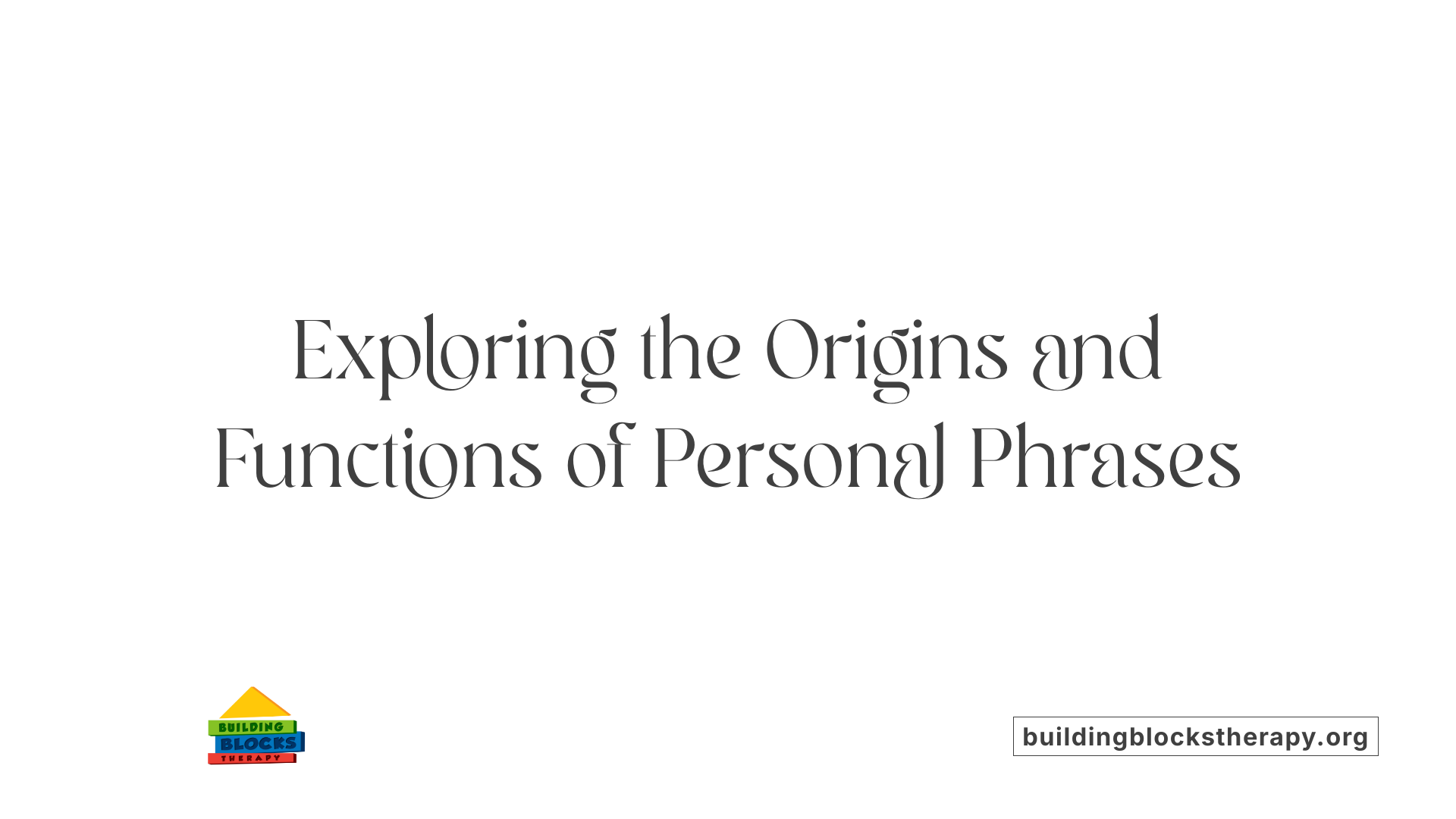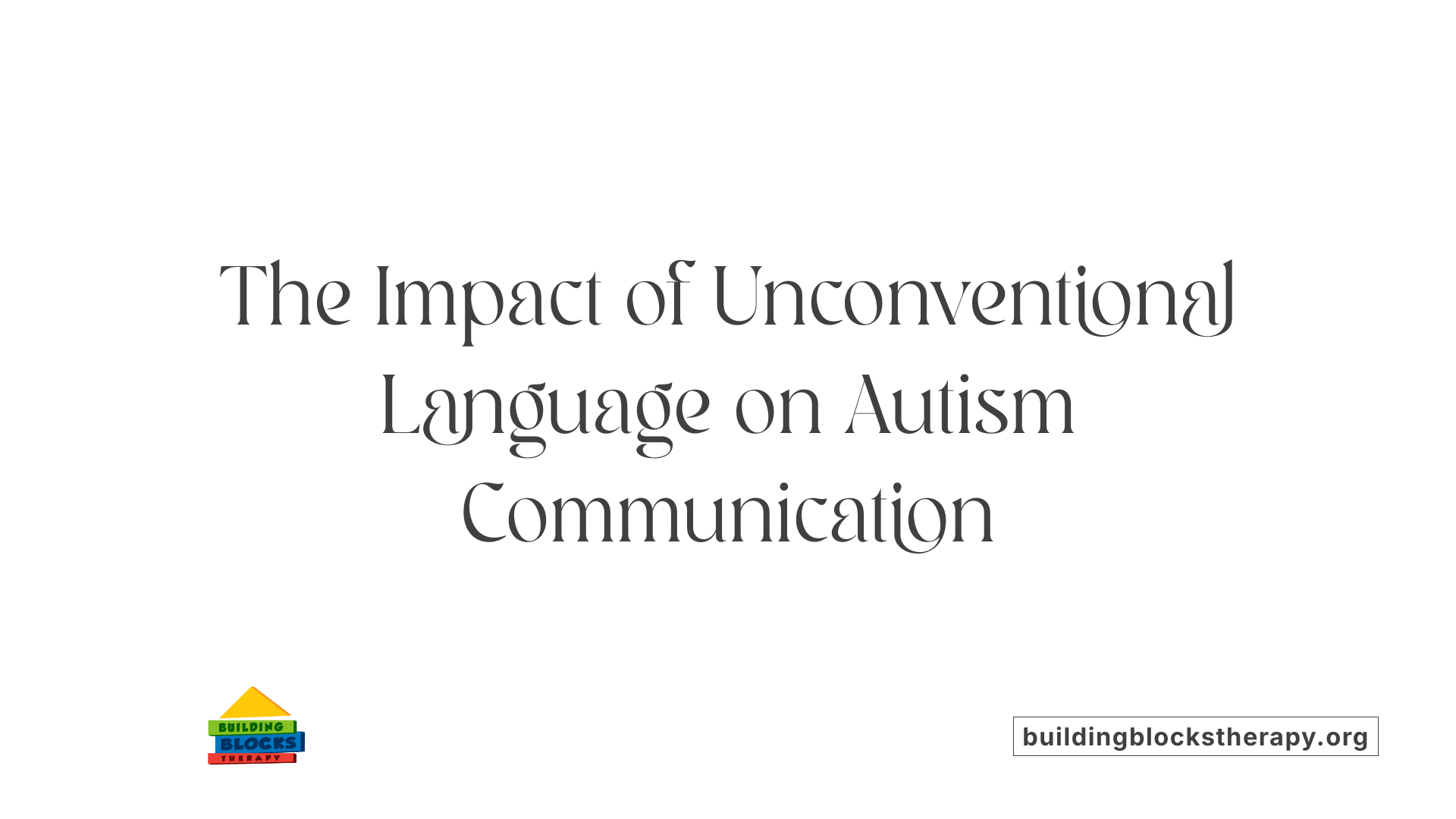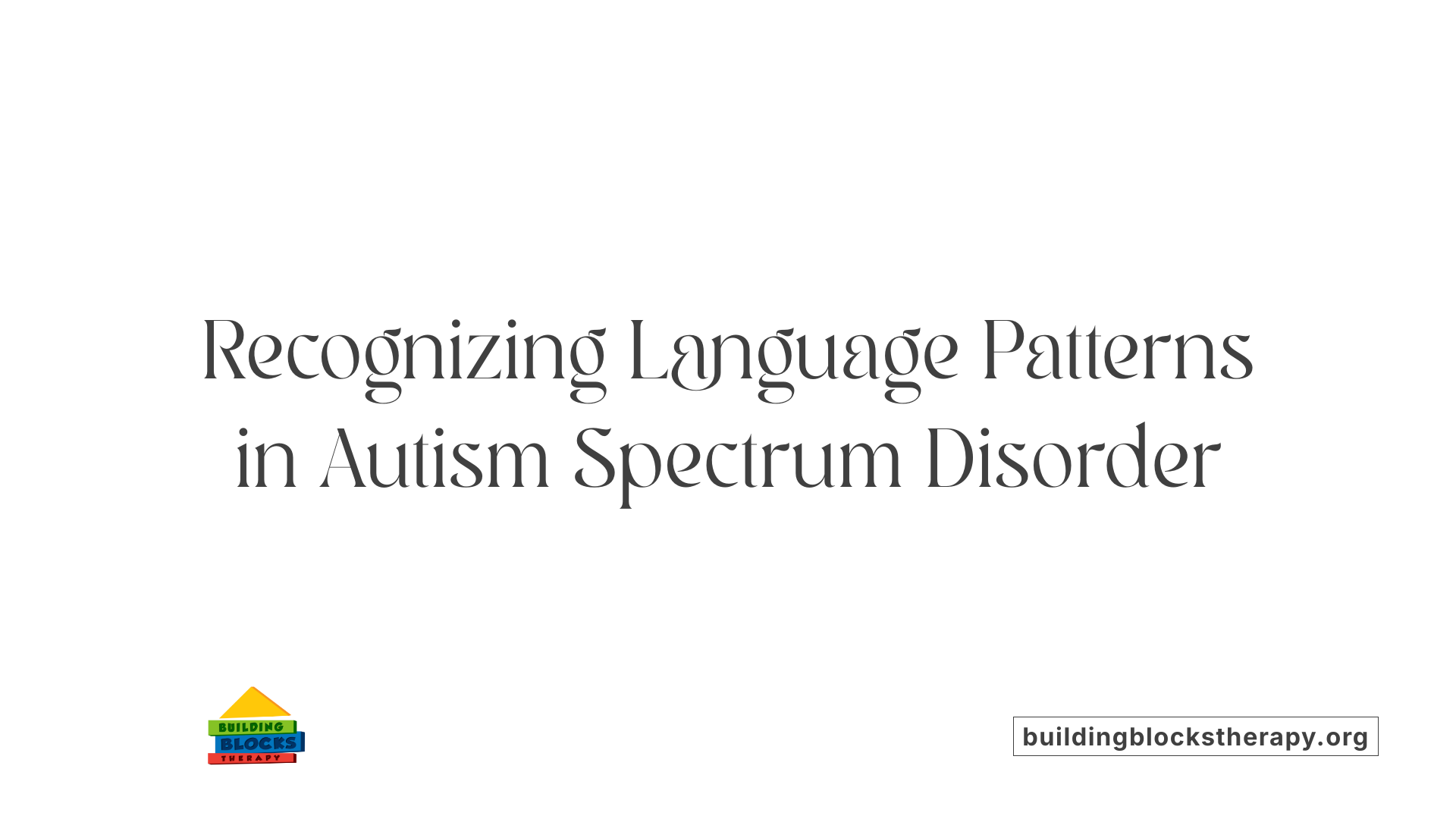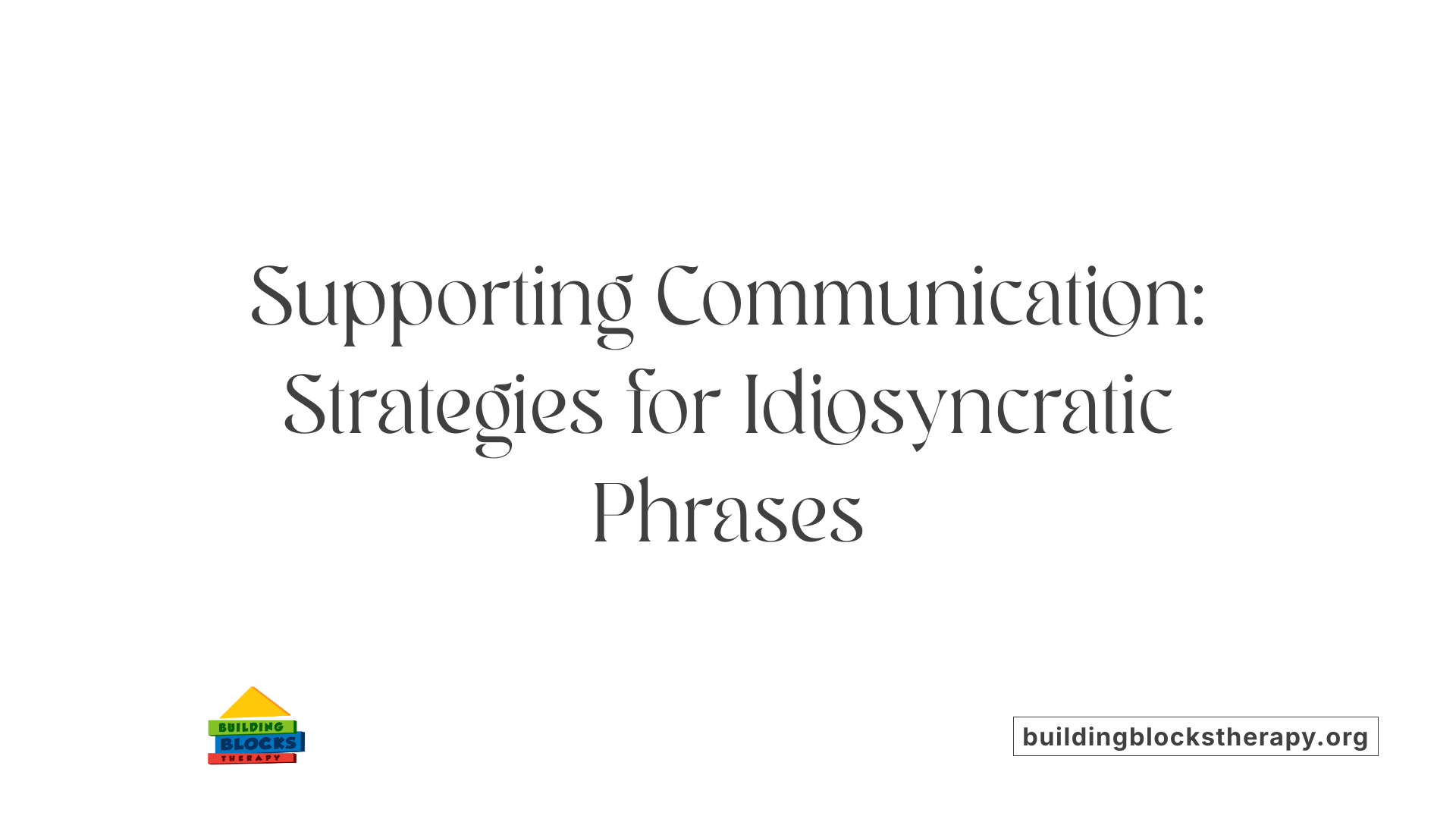Understanding Idiosyncratic Phrases in Autism Spectrum Disorder
Idiosyncratic phrases are a hallmark feature in the speech of many individuals with autism spectrum disorder (ASD). These unique, personal expressions reflect deeper cognitive and social processes, offering insight into their distinctive communication styles. Exploring the characteristics, roles, and educational implications of these phrases enhances our understanding of neurodiversity and aids in developing targeted support strategies.
Defining and Characterizing Idiosyncratic Phrases

What are idiosyncratic phrases and how are they characterized?
Idiosyncratic phrases are highly individualized expressions that reflect a person's unique language style. They often consist of unconventional uses of normal words, neologisms (newly created words), stereotyped or humorous phrases, and vocabulary that may seem unusual to others but hold special meaning for the speaker. In children with autism spectrum disorder (ASD), these phrases can significantly influence pragmatic communication skills and social interactions.
Characteristics of these phrases include their peculiarity to the individual’s language and cultural background, often being repetitive or non-standard. They may only be fully understood by the speaker and close acquaintances, creating a personal code that reflects their experiences, interests, and cognitive processes.
Developmentally, such language emerges as a means to express identity, foster connections, and establish a sense of belonging. It can serve as a bridge for social bonding or self-expression, especially when conventional language is challenging. Because of their unique nature, tailored support and therapy are often required to facilitate effective communication and help integrate these expressions into everyday interactions.
Developmental origins and functions of these phrases
Idiosyncratic phrasing typically develops from a combination of linguistic exploration, imagination, and cognitive development. Children often invent words or modify existing ones as they experiment with language, which is a natural part of linguistic growth.
In ASD, these phrases may be reinforced by routines or the repetitive nature of their language use, which can serve comfort or predictability. They also help individuals create a personal sense of order and control over their communication.
The functions of these phrases extend beyond mere expression; they act as social signals, bonding mechanisms, and markers of individual identity. By understanding and accepting these expressions, caregivers and clinicians can better support adaptive language development and social integration.
Their role as markers of individual identity and cognitive processes
Idiosyncratic speech is often a reflection of an individual’s inner world, serving as a badge of personal identity. These expressions can reveal preferences, interests, and cognitive tendencies that are otherwise difficult to access through standard language.
Research indicates that about 30-40% of individuals with ASD display such language features, which can be indicative of their unique perspective and processing style. Recognizing and understanding these phrases provides clues about their thought processes and emotional states, supporting more personalized approaches to therapy and social support.
In summary, idiosyncratic phrases are not mere speech anomalies but vital elements of individual expression, carrying deep developmental and social significance. Effectively supporting their use involves patience, tailored communication strategies, and an emphasis on appreciating personal linguistic diversity.
The Role and Significance of Unconventional Language in ASD

What role does idiosyncratic language play in autism spectrum disorder?
In children with Autism Spectrum Disorder (ASD), idiosyncratic language is a prominent feature that reflects atypical patterns of speech development. This type of language encompasses the creation and use of unusual words, phrases, or sentence structures that often only have meaning within the child's own experience or perspective. For instance, children might invent neologisms—completely new words—or use familiar words in unconventional ways that may seem confusing to others.
Research indicates that approximately 30-40% of individuals with ASD exhibit some form of idiosyncratic language. Such speech behaviors can include echolalia, where immediate or delayed repetition of words or phrases occurs. They also involve pedantic language, characterized by overly formal or precise expressions, and the use of neologisms or made-up words. These patterns can significantly influence pragmatic skills, making it challenging for children to interpret social cues or adapt their language to different contexts.
While these speech patterns can sometimes present communication barriers, they also highlight the unique cognitive and linguistic processes in ASD. Addressing idiosyncratic language through targeted interventions, such as speech therapy, can enhance pragmatic abilities and improve social interactions. Recognizing the importance of these unconventional patterns helps clinicians and caregivers develop more tailored strategies that respect individual communication styles, fostering better understanding and social integration.
In sum, idiosyncratic language has a nuanced role in autism. It not only characterizes atypical language development but also serves as a window into the cognitive world of individuals with ASD, emphasizing the need for nuanced support that values their unique ways of communicating.
Language Patterns in Autism: Unconventional and Unique

How do individuals with autism use unconventional or unique language patterns?
Individuals with autism often exhibit distinctive language features that include both non-generative forms like echolalia—and its variations such as immediate or delayed repetition—and self-repetition. Echolalia can serve various functions, including taking turns in conversation, self-soothing, or expressing emotions. Self-repetition might also help clarify thoughts or maintain focus during communication.
In addition to these repetitive behaviors, individuals with autism may use more creative or unusual language styles known as generative patterns. These include neologisms—newly invented words that may hold personal meaning—and idiosyncratic phrases, which are atypical expressions that only make sense within their context or to those familiar with their thought process. Pedantic language, characterized by overly formal or precise wording, is another common feature.
These language behaviors serve multiple roles, from facilitating social interaction to demonstrating cognitive and linguistic growth. Although they are more prominent among autistic individuals, such patterns are not exclusive to autism and can appear in other contexts.
Research methods for observing these patterns involve analyzing speech transcripts, looking at features like syntax, semantics, and use of language models. Clinical tools such as the Autism Diagnostic Observation Schedule (ADOS) incorporate assessments of these unconventional language patterns, providing valuable insights for diagnosis and intervention.
Impacts and Support Strategies for Idiosyncratic Usage

What is the impact of idiosyncratic phrases on communication and social interaction?
Idiosyncratic phrases can make communication more challenging by creating misunderstandings and reducing social reciprocity. For children and adults with autism, such language patterns, including neologisms and unconventional prosody, often reveal their inner thoughts and emotions. However, these unique speech styles can obscure social cues and hinder smooth interactions with others.
When combined with atypical gestures or speech, idiosyncrasies may delay social engagement or complicate diagnosis. Nonetheless, these language traits also serve as valuable markers for understanding individual cognition and feelings. Recognizing how idiosyncratic phrases influence interactions emphasizes the importance of tailored approaches that foster clearer communication and social integration.
Strategies and tools for support, including therapy and visual aids
Supporting individuals who use idiosyncratic language involves personalized strategies like visual aids and communication devices. Augmentative and alternative communication (AAC) tools—such as picture boards or speech-generating devices—help bridge understanding gaps.
Speech-language therapy tailored for autism can assist in enhancing pragmatic language skills, reducing reliance on neologisms, and encouraging more conventional expression. Creating a supportive environment that emphasizes patience, active listening, and clarification reduces frustration and promotes engagement.
Caregivers and professionals benefit from learning about the nature of idiosyncratic speech, which fosters acceptance and inclusive communication practices. Sensory considerations, minimizing distractions, and encouraging linguistic exploration are also effective supports.
Acceptance and integration of idiosyncratic language in social contexts
Embracing idiosyncratic language as part of an individual's identity enriches social interactions and relationships. Recognizing that such language reflects personal experiences, interests, and cultural background helps reduce stigma.
In social settings, creating space for unique expressions encourages confidence and a sense of belonging. Using specific strategies like explaining the meanings behind unusual words, asking specific questions, and tuning into facial and body language foster more meaningful connections.
Ultimately, integrating these diverse language styles into social fabric promotes an inclusive environment where all forms of communication are valued and understood.
Supporting Effective Communication and Building Social Skills
Creating inclusive environments that accept idiosyncratic speech is essential for supporting children with autism. These unique language patterns—such as neologisms, echolalia, pedantic language, and unconventional syntax—are common in many individuals on the spectrum. Recognizing and appreciating these communication styles helps foster a positive, accepting atmosphere, where children feel valued rather than marginalized.
Therapeutic approaches aimed at enhancing pragmatic skills focus on improving the functional use of language in social contexts. Speech therapy, for instance, often employs strategies tailored to each child's speech patterns, helping them develop more flexible communication, understand social cues, and adjust their language according to the situation. Techniques like modeling, role-playing, and social stories are used to promote pragmatic language development.
Using visual aids and communication tools plays a crucial role in supporting children with unconventional speech. Tools like picture exchange communication systems (PECS), visual schedules, and augmentative and alternative communication (AAC) devices help bridge understanding gaps. They assist children in expressing their needs, thoughts, and feelings more effectively, reducing frustration and improving social interaction.
Understanding speech features such as prosody (tone, pitch, rhythm) and idiosyncratic language enhances support strategies. It allows caregivers and educators to tailor communication methods that respect each child's speech style. For example, recognizing that a child's intonation may differ from typical patterns can help in adjusting expectations and responses, making conversations more meaningful.
Individual communication styles influence social and educational support by necessitating personalized interventions. When educators understand a child's unique language use, they can create supportive environments that promote engagement. Visual cues, tailored questions, and patience are critical components in nurturing social reciprocity.
In conclusion, fostering acceptance and understanding of atypical speech not only improves communication but also builds a more inclusive society. Through adaptive strategies, specialized tools, and empathetic approaches, children on the autism spectrum can enhance their social skills and develop more confident, expressive communication.
The Path Forward in Recognizing and Supporting Idiosyncratic Language
Enhancing our understanding of idiosyncratic phrases and unconventional speech in autism is vital for advancing clinical, educational, and social support. Recognizing these personalized expressions aids in early diagnosis, effective intervention, and fostering inclusive environments. Through tailored therapies, acceptance, and innovative communication tools, we can better support individuals with ASD in expressing themselves fully and connecting meaningfully with others. Embracing neurodiversity and the complexity of language styles enriches our collective approach to communication, ensuring everyone’s voice is heard and valued.
References
- An automated assessment framework for atypical prosody and ...
- Revisiting a framework for spoken language features in autism - PMC
- High-Functioning Autism Speech Patterns
- Neologisms and idiosyncratic language in autistic speakers
- [PDF] Idiosyncratic Speech - AWS
- Understand Idiosyncratic Phrases & Speech in Children
- What is Idiosyncratic Language? - Goally
- Unlocking Idiosyncratic Language in Autism - Number Analytics






